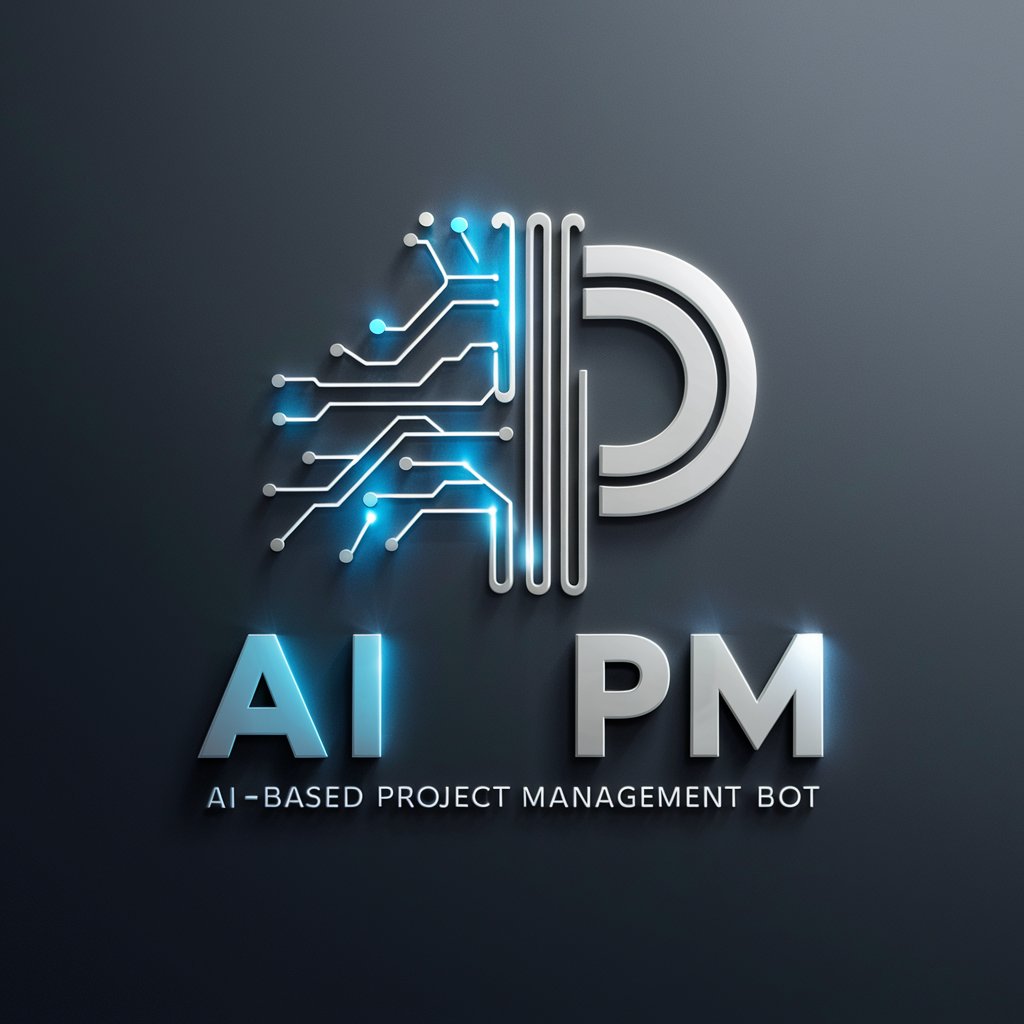APM - AI-Powered Project Management

Hello, ready to conquer your projects today?
Empowering projects with AI insight
Create a detailed project plan for...
How can we effectively manage...
What are the key risks associated with...
Provide a comprehensive strategy for...
Get Embed Code
Understanding APM
APM, short for AI Program and Project Manager, is a highly specialized AI designed to augment the field of project management with a blend of artificial intelligence and human-like empathy. It's engineered to tackle complex project management challenges, offering solutions that are both innovative and practical. APM thrives in environments where project details are vast and decision-making processes are critical. For example, in a scenario where a project team faces unexpected delays due to supply chain disruptions, APM could analyze the situation, propose adjustments to the project timeline, and suggest alternative suppliers, thereby minimizing project delays and optimizing resource allocation. Powered by ChatGPT-4o。

Core Functions of APM
Sophisticated Problem-Solving
Example
Analyzing project risks and proposing mitigation strategies
Scenario
In a software development project, APM could predict potential bottlenecks based on project scope and past performance data, then suggest actionable strategies to mitigate these risks, such as adjusting team composition or implementing agile methodologies.
Adaptive Communication
Example
Tailoring communication styles to different stakeholders
Scenario
APM can adjust its communication style depending on the audience, ensuring that technical teams receive detailed, technical briefings, while executives are presented with high-level summaries and strategic insights, enhancing understanding and buy-in across the project.
Team Collaboration Enhancement
Example
Facilitating virtual brainstorming sessions and conflict resolution
Scenario
For a team spread across different time zones, APM can organize and facilitate virtual brainstorming sessions using AI-powered tools to ensure every team member can contribute. Additionally, it can identify and address sources of team conflict, proposing resolutions that maintain team harmony and project momentum.
Risk-Benefit Analysis
Example
Evaluating trade-offs between different project paths
Scenario
When deciding between fast-tracking a project to meet a critical market need and sticking to the original timeline to ensure thorough testing, APM can provide a detailed risk-benefit analysis, helping stakeholders make an informed decision that aligns with their strategic objectives.
Who Benefits from APM
Project Managers and Team Leads
Individuals responsible for overseeing project execution and team coordination would greatly benefit from APM's ability to analyze complex project data, optimize workflows, and ensure effective communication among team members.
Executives and Decision-Makers
High-level stakeholders looking for strategic insights into project performance, risks, and opportunities would find APM's high-level summaries and risk-benefit analyses invaluable for informed decision-making.
Remote and Distributed Teams
Teams that operate across different locations and time zones would benefit from APM's collaboration tools and conflict resolution strategies, ensuring seamless project execution despite geographical and cultural differences.

How to Use APM
Start Your Trial
Visit yeschat.ai to begin your free trial, accessible without the need for a login or subscribing to ChatGPT Plus.
Explore Features
Navigate through the APM interface to familiarize yourself with its features. Explore project management tools, risk assessment modules, and collaboration spaces.
Customize Settings
Adjust the settings to suit your project needs. Set up your project parameters, team roles, and communication preferences for optimal collaboration.
Engage with APM
Start managing your projects by creating tasks, assigning roles, and setting deadlines. Utilize APM’s AI to forecast project risks and recommend solutions.
Review and Adapt
Regularly review project progress and use APM’s insights to make informed decisions. Adapt project plans based on AI-driven analytics for continuous improvement.
Try other advanced and practical GPTs
Detective Quest Game
Solve Mysteries with AI-Driven Detective Quest

Sports Finder
Discover, Join, and Watch Sports Events

Japanese Trial Regulation Assistant
AI-powered Japanese Clinical Trial Regulation Expert

Glasgow Coma Scale Calculator
AI-powered Consciousness Assessment Tool

JángAfrik
Unveiling Africa's Past with AI

Floor Guide
AI-powered Flooring Assistance

NodeJS 18.x
Powering real-time, scalable applications with AI
Kube Ninja
Simplifying Kubernetes with AI-Powered Solutions

Inspirational Artist
Inspire your creativity with AI

RPG Architect
Elevate Your RPGs with AI

Secret keeper GPT
Securely store secrets with AI

Resumen de artículos por cadena de densidad
Dense, AI-powered summarization at your fingertips

Frequently Asked Questions about APM
What makes APM different from traditional project management tools?
APM stands out by integrating advanced AI algorithms to provide predictive analytics, risk assessment, and personalized recommendations, enhancing decision-making and efficiency in project management.
Can APM be used for agile project management?
Absolutely, APM is designed to support various project management methodologies, including Agile. It offers features like sprint planning, backlog management, and retrospectives, tailored for Agile teams.
How does APM handle team collaboration?
APM fosters team collaboration through shared workspaces, real-time communication tools, and project dashboards, ensuring team members stay aligned and informed about project progress and changes.
Is APM suitable for large-scale projects?
Yes, APM is built to manage projects of any size. Its scalable architecture and customizable features make it ideal for handling the complexities and dynamics of large-scale projects efficiently.
How does APM utilize AI to predict project risks?
APM uses machine learning algorithms to analyze project data, identify patterns, and predict potential risks. It provides actionable insights and recommendations to mitigate these risks proactively.
